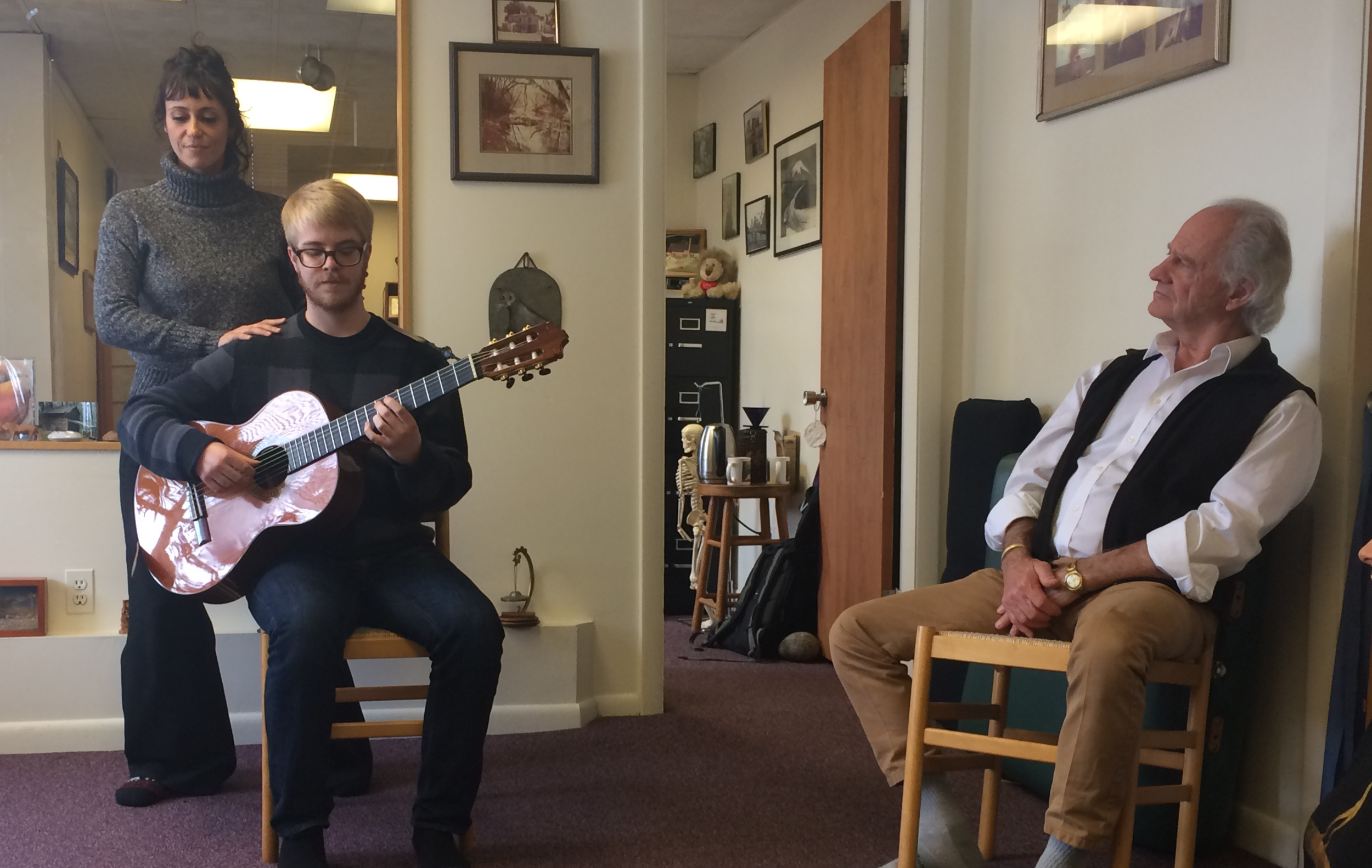Curriculum
The concepts and principles of the Alexander Technique are explored and developed through discussion, demonstration, and hands-on experience, as well as through reading and writing assignments. These concepts and principles include inhibition, the head-neck relationship, the directions, and unity of the whole self. Trainees continually improve their own kinesthetic awareness, while developing and refining skills in listening with their hands.
Trainees learn to work with students in many different setups, including with the student sitting in a chair, moving from sitting to standing, lying on a massage table, or with the student engaged in an activity. Working in activity is a particular hallmark of the program. A great deal of attention is paid to teaching trainees how to work with a student, while the student is engaged in an activity of interest to him or her. For example, the student could be singing or playing an instrument, rehearsing a scene, working at a computer, or peeling an apple.
Anatomy of the muscular, skeletal, and connective tissue systems is taught, with an emphasis on experiencing the knowledge in our own bodies and movement. Guest teachers with special expertise in anatomy, Anatomy Trains, and body mapping are invited to present workshops and presentations.
Alexander’s procedures and exercises are taught (such as “monkey,” “hands-on-back-of-chair,” and “whispered ah”) along with other exercises that further understanding of the work, such as constructive rest.


